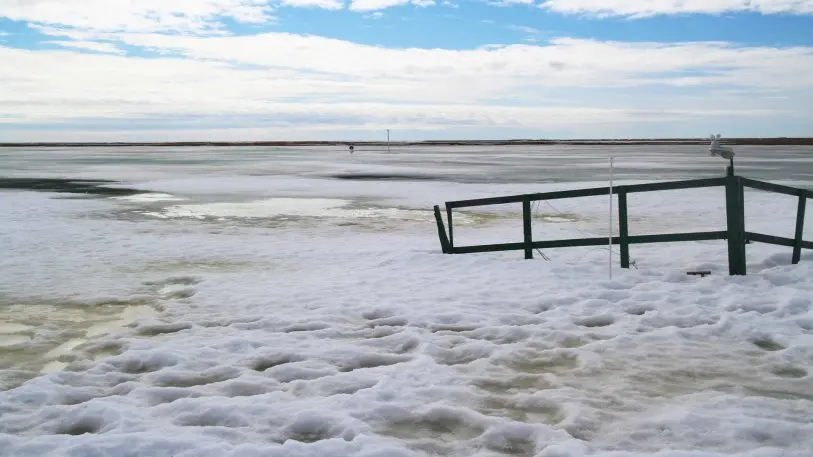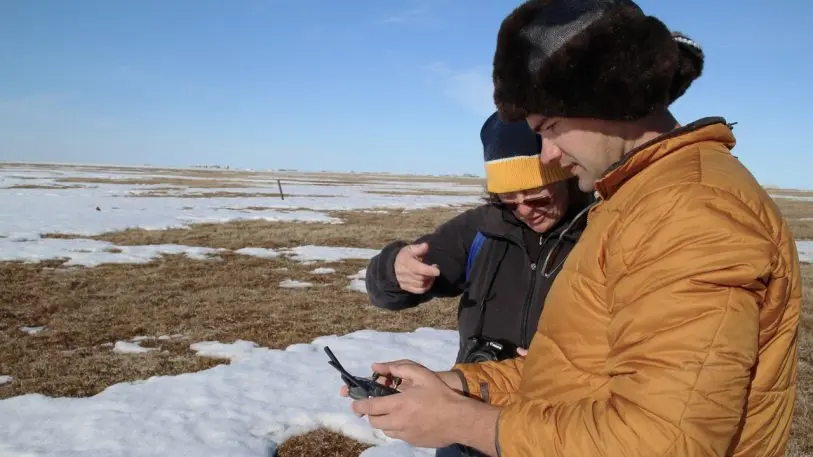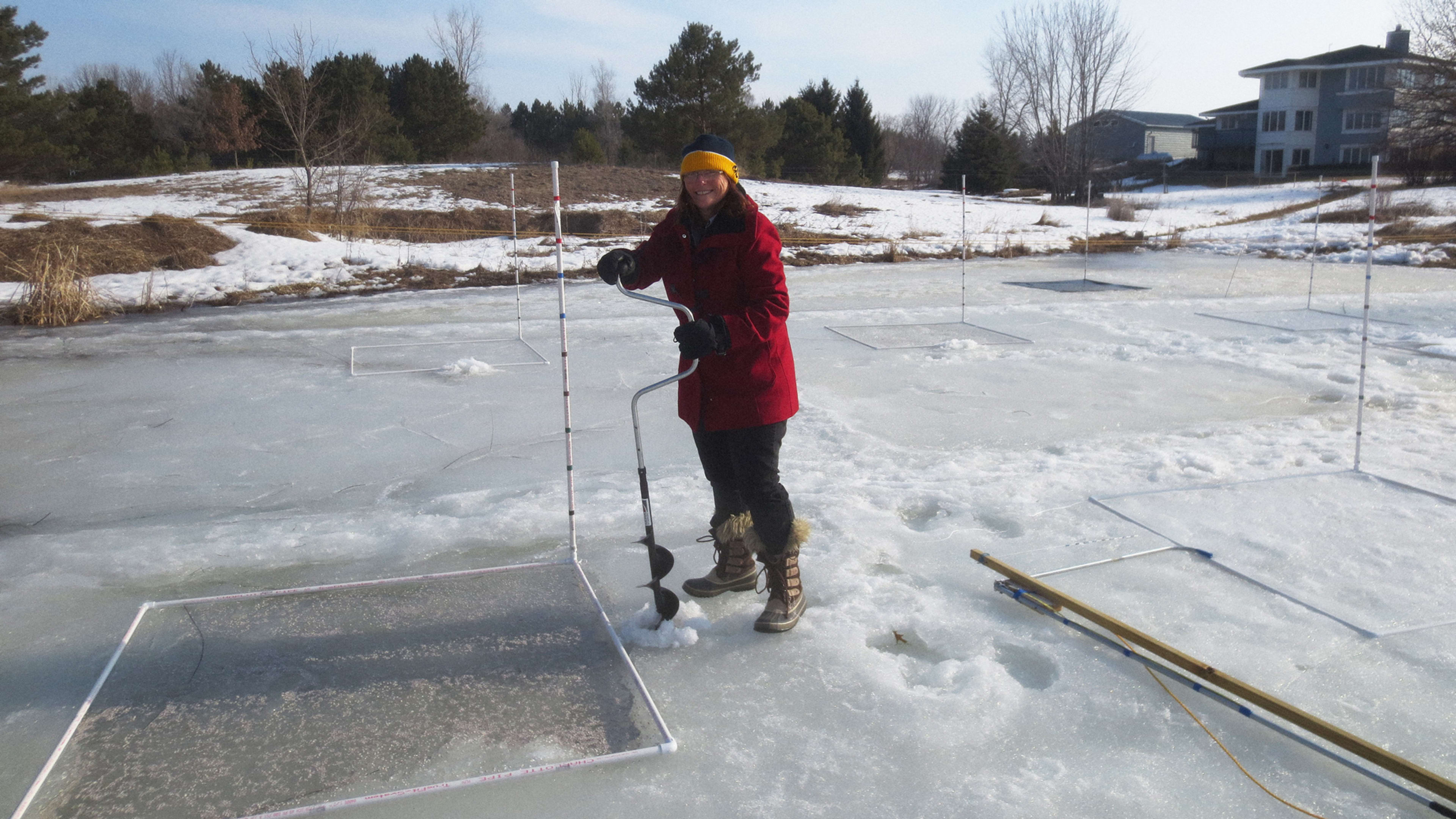It’s a simple material: tiny, hollow glass spheres made from sand. But one nonprofit believes that it could play a critical role in slowing climate change while the world transitions to a zero-carbon economy.
For more than a decade, Leslie Field, an engineer with 54 patents who previously worked for Chevron, has researched the possibility that the material could be used in the Arctic to help slow the catastrophic melting of sea ice. Around 95% of the thickest ice in the Arctic–ice that grew over more than one year–has been lost over the last 40 years. That’s both a result of climate change and a cause of it, because the ice reflects sunlight. As the ice disappears, darker water soaks up more heat, speeding the process of warming.
“Multiyear ice, the reflective ice in the Arctic, was historically the Earth’s heat shield,” says Field, who now leads a nonprofit called Ice911. For hundreds of thousands of years, the ice reflected summer light away from the planet. “It’s not there to do that anymore,” she says. “So as a result, we now have a further heating effect that’s becoming comparable with the driving effect of CO2 in the atmosphere.”
The solution that Field’s team is exploring involves spreading the tiny glass microspheres–which look a little like snow–over the thin ice that still forms every winter to make it more reflective and help keep it from melting. That ice isn’t as reflective as thick older ice, but Field’s team is testing if the small glass particles could mimic the benefits that multiyear ice has delivered for centuries.

In small field tests on a lake near Utqiaġvik, a town in the far north of Alaska, the team has conducted several tests of the technique, most recently in April 2018. They first spread the material through large salt shaker-like devices, and then tested an agricultural seed spreader dragged behind a snowmobile. The process worked. Field also worked with a team of climate modelers to try to predict what would happen at a larger scale on sea ice. Results published in a peer-reviewed paper last year suggest that it would be effective. “Just by slowing the melt we actually can restore the Arctic ice over time,” Field says. “And that’s profound. You actually get a bump up with just the first year.”
Actually implementing this would be very challenging. The Arctic Ocean covers around 15 million square kilometers, and applying the material to all of the ice would be unfeasible. Field is working with climate modelers to identify areas that are particularly critical, like the Fram Strait, the passage between Greenland and Svalbard. “There’s a 10-times increase in effectiveness per unit area for deploying there, versus deploying in the whole Arctic,” she says. But even in more limited areas–say, 100,000 square kilometers–it’s still an enormous task. Field suggests that it could be accomplished by using ships, possibly former crude carriers, to carry the huge volumes of tiny beads and then blowing them out over the ice, letting prevailing winds spread them over a large area. It could cost between $1 billion and $5 billion every year. Still, Field points out that the cost is far smaller than the cost of climate impacts that the project could help mitigate–hurricanes, wildfires, and other disasters that can cause trillions in damage.

Some scientists are skeptical about the approach. “I’m not saying it is impossible,” says Ken Caldeira, an atmospheric scientist at Carnegie Institution for Science’s Department of Global Ecology. “I am saying that I am skeptical that artificially whitening sea ice is practical to do in the real world at a scale sufficient to make a difference to the global climate system.” Field plans to continue working with climate modelers to prove the value, and is also working on the next step–getting the necessary permits to test the process on sea ice. Getting permits so that the work can be done at a large scale will be even harder. The U.S. Environmental Protection Agency and International Maritime Organization don’t yet have the governance framework in place to approve this type of project.
The window in which Field could implement a test of this intervention is shrinking. Experts say that the Arctic could be ice-free in the summer by 2030–plus or minus 10 years. That could mean next year. It isn’t possible that this project could happen that quickly, but it could, in theory, happen before 2030. “This looks like the largest safely addressable lever on climate change,” Field says, “and it’s really urgent to take it now.”
Recognize your brand’s excellence by applying to this year’s Brands That Matter Awards before the early-rate deadline, May 3.
